-
ConsAsia
Information - Speakers
- Program
- Call for Abstracts
-
AOFCD
Membership - Registration
-
Accommodation
& Tour -
Sponsorship
& Exhibition
- D-day
- Today 2024.10.23 D 1811
- ConsAsia 2019
- The lnaugural Meeting of the Asian and Oceanian Federation of Conservative Dentistry (AOFCD)
- November 8(Fri) - 10(Sun), 2019
- Important Due Dates :
-
- Abstract Submission Opens [March 01(Fri), 2019]
- Abstract Submission Ends [May 31(Fri), 2019]
- Acceptance Notification [June 28(Fri), 2019]
Keynote Speakers
- Page Path
-

- Speakers
- Keynote Speakers
Keynote Speakers (Alphabetical Order)
-
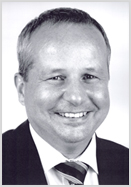 Bart Van Meerbeek
Professor
Bart Van Meerbeek
Professor
BIOMAT, Department of Oral Health Sciences
KU Leuven (University of Leuven)
Belgium - Current Clinical Approaches for Adhesive Luting of CAD-CAM Block Restorations More
- Digital technology is indispensable in today's dental practice. The first digital revolution occurred several years ago with the introduction of CAD-CAM technology for the production of semi-direct (chair side) and indirect (via dental lab) restorations. Currently, most CAD-CAM systems are based on 'subtractive' manufacturing processes, where restorations are milled out of industrially manufactured blocks. Various types of ceramic, resin-based composite and polymer-infiltrated ceramic CAD-CAM blocks are today available for chair-side partial and full crown restorations. This lecture will address the different clinical approaches for (adhesive) luting of CAD-CAM block restorations, thereby focusing on both the cement-tooth as the cement-restoration interface. Inevitably, one may expect that ‘additive’ manufacturing processes or so-called '3D printing' will soon find more applications in restorative dentistry.
-
 Byoung-In Suh
President & Owner
Byoung-In Suh
President & Owner
BISCO
USA
- Selection of Cements for Maximizing Clinical Success More
-
When placing indirect restorations, what are your cementation options? Should you bond or cement the restoration? If you bond, is your adhesive compatible with your dual-cured resin cement? What are the potential benefits of using a self-adhesive cement?
Answers to these questions, and other adhesion and restorative principles will be addressed and provide you with the knowledge to help facilitate material selection for better and simplified cementation, and ultimately, successful long-term restorations. The issues of adhesion incompatibility with some composites/cements, and the differences between dual-cured luting cements on the market will be explained. Research shows that not all dual-cured cements are equal. Depending on the material, light–curing may or may not be necessary to achieve the highest degree of conversion. However, with some cements, light-curing may or may not inhibit the self-cure mechanism. How can you effectively bond your indirect restorations and insure that your dual cure cement is completely polymerized?
In this lecture, articipants will learn optimal cementation protocols, including how to select the proper materials & techniques when bonding different types of indirect restorations like porcelain and zirconia. Cementation options, including when to bond and when to cement, and the potential benefits of using a calcium silicate self-adhesive cement, will be explained.
-
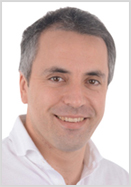 Gaetano Paolone
Professor
Gaetano Paolone
Professor
Conservative and Restorative Dentistry
Università Vita e Salute San Raffaele
ITALY - Direct Restoration Procedures in Anterior and Posterior Teeth More
- During the last 25 years there has been a real evolution in adhesive dentistry, by which the number of treatment possibilities has expanded. Initially, direct composite restorations were only indicated for simple restorations. Nowadays the clinical indications for direct composite restorations are stretched towards more complex situations. Composite can give the clinician the capability to solve a wide range of clinical situations. Modeling techniques in anteriors and posteriors will be the main focus of the lecture.
-
 Jack Ferracane
Professor and Chairman
Jack Ferracane
Professor and Chairman
Restorative Dentistry
Oregon Health & Science University
USA - Current Status and Future Advances in Dental Composite Restorative Materials More
- Dental composites have evolved based on the needs and requests of dental practitioners desiring materials capable of being used in more extensive applications, and with greater ease of use. Existing products produce high-quality restorations with excellent longevity. In the past, new formulations focused on better esthetics, polishability, handling, and wear resistance. More recently commercial materials have been designed with reduced polymerization shrinkage and shrinkage stress, and enhanced depth of cure for use as bulk-fill restoratives. Looking to the future, the next series of developments will likely be to produce direct composite restoratives with self-adhesive qualities, already present in some flowable and cementing materials, and resin restoratives that are more resistant to the degradatory effects of intraoral hydrolysis and attack from salivary and bacterially derived enzymes. Other developments will likely include materials that are bioactive, interacting with the environment by releasing essential ions for remineralization processes, as well as releasing important molecules capable of recruiting cells to specific sites to aid in the healing and repair of lost tooth structure. Materials capable of repair of internal and external defects can also be envisioned. The development of dental resin-based composites continues to represent one of the most exciting areas of dentistry.
-
 Lorenzo Breschi
Professor
Lorenzo Breschi
Professor
Department of Biomedical and Neuromotor Sciences
University of Bologna
Italy - Successful Bonding from Etching to Light Curing More
-
Aim of the presentation will be a critical review of the latest improvements of dental bonding systems. Chemical background and physical characteristics of the adhesives will be presented to understand the clinical capabilities and the possible role of the clinician to obtain the highest bonding performances, in terms of improved bond strength, extended durability and reduced post-op sensitivity. The lecture will also clarify the mechanisms that affect the stability of the adhesive interface over time, analyzing the role of different degrading phenomena synergistically contributing to degrade the hybrid layer.
The lecture will provide clinical step-by-step procedures along with “tips and tricks” to achieve the highest clinical success in terms of aesthetic requirements, biomechanical properties of adhesive restorations, bond strength and stability of the adhesive interface over time.
-
 Masashi Miyazaki
Professor and Chair
Masashi Miyazaki
Professor and Chair
Operative Dentistry
Nihon University School of Dentistry
Japan - Clinical Success of Composite Restorations with Universal Adhesives More
- In the past few decades, an increase in the desire for tooth colored restorations and minimally invasive treatments have been advocated, and the popularity of direct restorations using resin composites have increased. These trends are based on the development of adhesive dentistry as well as resin composites technologies. Universal adhesives are recently introduced to overcome the shortcomings of self-etch adhesives. Universal adhesives are thought to provide benefits to clinicians owing to their simplified bonding steps and broad applicability in numerous clinical situations. One of the most important expectations for universal adhesives is that the adhesives can be used with either self-etch or total-etch modes. This multi-mode usage of universal adhesives has been reported to enhance enamel bond durability with a total-etch approach and to reduce damage to dentin with a self-etch approach. Thus, practitioners should select the optimal etching mode when using universal adhesives in accordance with cavity features such as depth, size, location, and proportion of enamel and dentin. This presentation will explore the importance of adhesive systems in clinical dentistry and discuss about their long-term durability.
-
 Reuben Kim
Professor and Chair
Reuben Kim
Professor and Chair
Restorative Dentistry
UCLA School of Dentistry
USA - Vital Pulp Therapy – An Old Thought but a New Paradigm in Restorative Dentistry More
- Vital pulp therapy, such as direct pulp capping, is a conservative restorative treatment modality with a goal of preserving vitality of the otherwise diseased pulp tissue. Biologically, vital pulp therapy allows for reparative dentin regeneration by dental pulp stem cells, formation of which serves as a “biological seal” to protect the underlying pulp tissue. Calcium hydroxide has been used more than 80 years for this purpose in restorative dentistry; however, its clinical utilization has been less appreciated due to unpredictable outcomes that often resulted in a complete removal of the pulp tissue via root canal therapy. On the other hand, recent introduction of hydraulic calcium silicate cements (HCSCs), derivatives of prototype mineral trioxide aggregates (MTAs), confers reliable and predictable outcomes that increasingly gained its popularity and enabled vital pulp therapy as a viable conservative treatment option. In this seminar, we will discuss about the current status of vital pulp therapy and present some of our research findings related to reparative dentin regeneration at the molecular, preclinical, and clinical levels. We will also propose that vital pulp therapy is a new paradigm in managing the diseased pulp tissues in restorative dentistry.
-
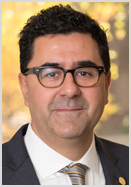 Bekir Karabucak
University of Pennsylvania
Bekir Karabucak
University of Pennsylvania
Endodontics
USA - 3D Root Canal Enlargement, Disinfection and Obturation More
- Three-dimensional instrumentation, disinfection and obturation of a canal system are essential for the success of a root canal treatment. Recently, new file systems called XP Shaper and Finisher file systems (FKG, La Chaux-de-Fonds, Switzerland) have been introduced featuring the MaxWire® Technology allowing files to expend and adapt the three-dimensional structure of root canal. This technique creates conservative canal preparation preserving more dentin tooth structure but, also, provides more efficient anatomical treatment of dentin surfaces. In the last decade, Mineral Trioxide Aggregate (MTA) has been used successfully with a range of treatments such as endodontic microsurgery, perforation repair, pulp capping or revascularization. MTA became the material of choice based on biological principals however, its handling properties remain a practical obstacle to its application in root canal obturation. Recently, other calcium silicate based bioactive cements and sealers have been introduced changing the rational and methods of accepted endodontic techniques in root canal obturation, perforation repair or Endodontic microsurgery. This presentation will explore the clinical applications, outcomes of XP file systems and bioceramic sealer obturation technique in endodontic practice. The hands-on course will allow participants to practice XP canal instrumentation and Bioceramic sealer obturation technique, and implement the knowledge learned during the seminar.
-
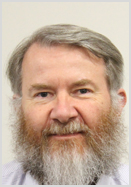 David Manton
Professor
David Manton
Professor
Faculty of Medicine, Dentistry & Health Sciences
The University of Melbourne
Australia - Dental Caries – The New Paradigms More
- Dental caries, a behaviourally and genetically influenced bacterial disease moderated by individual characteristics, is one of the world’s most prevalent primarily preventable conditions. In many communities worldwide, a large proportion of children are still severely affected by dental caries. In the past 50 years, the prevention of dental caries has concentrated on the delivery of fluoride, whether it be via reticulated water, toothpaste or professionally applied products such as varnishes. Despite still being the ‘gold standard’ for prevention, the action of fluoride is limited somewhat by the concentration of bioavailable calcium and phosphate. Several products containing or having the ability to stabilize calcium and phosphate are now available commercially. Surprisingly, the primary cause of dental caries – a cariogenic diet, has often been ignored or barely mentioned, as modifying the diet involves behaviour modification, a difficult proposition in many people. In some individuals, modification of the risk factors is unlikely or not possible, so other methods, such as low viscosity resin infiltration of early carious lesions, become the most appropriate intervention.
-
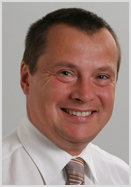 Ivo Krejci
President of the University Dental Clinics of the University of Geneva
Ivo Krejci
President of the University Dental Clinics of the University of Geneva
Switzerland -
Dental Fitness – The Paradigm Change in Dentistry
More - Dentistry of the past was characterized by a continuous degradation of the dentition through the lifetime of the patient requiring continuous imperfect repairs of heavy clinical symptoms and finally leading to extractions and replacements of the missing teeth by implant-supported crowns, bridges and dentures. This obsolete vision is progressively replaced by modern dentistry which integrates new high-tech diagnostics and high-tech non-invasive treatments and allows to keep the population in good dental health life-long. The practical container for this modern approach is a concept which the author calls Dental Fitness. The presentation will focus on the key elements of this concept.
-
 Junji Tagami
Professor
Junji Tagami
Professor
Cariology and Operative Dentistry
Tokyo Medical and Dental University
Japan - Minimally Invasive Aesthetic Restoration with Innovative Materials More
-
The recent adhesive and restorative materials provide excellent performance, and enabled us to apply the minimally invasive aesthetic restorations with extremely simplified procedures.
Understanding the recent adhesive materials and restorative materials is required to obtain the maximum performance of the materials. The clinical procedures, such as application of adhesive, irradiation to bonding resin, composite resin filling technique and irradiation, and cavity configuration are also very significant factors to affect the quality of restorations. The lecture provides the information on the adhesive resin materials from the basic and clinical issue for the successful restorations. Furthermore, the monitoring of restorations for the long lasting function of restoration in both biologically and esthetic points of view.
-
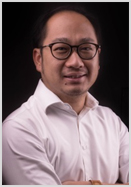 Marino Sutedjo
Endodontist
Marino Sutedjo
Endodontist
Private Practice
Indonesia -
Minimally Invasive in Endodontics, Trend or Necessity?
More -
Nowadays often we heard the term of Minimally invasive dentistry. This minimally invasive thing is pretty much apply on almost any field of dentistry. It’s main purpose mostly is to preserve healty tooth / tissue structure as much as possible and this is interesting that now we are thinking to do as conservative as we can. But in endodontic do this minimally invasive give us a huge benefit?
In this lecture, this issue will be discuss along with scientific evidence to proof that whether minimally invasive in endodontic give us a benefit or it’s just a trend.
-
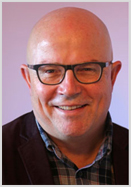 Niek Opdam
Professor
Niek Opdam
Professor
Dentistry
Radboud University Medical Centre
Netherlands -
Severe Tooth Wear, When and How to Restore?
More -
Rehabilitation of patients with severe tooth wear presents problems for the dentist, as restorative protocols are complicated and extensive, including raising the bite in increased vertical dimension of occlusion. Especially for this ‘high risk’ group of patients, showing bruxism and erosion, prognosis of these rehabilitations is likely to be limited due to recurrent wear and fracture of the restorations.
Therefore, for these patients with reduced dental tissues, a minimally invasive approach is mandatory in order to enable future retreatments. At the Radboud University in Nijmegen, the Netherlands, there is a special care centre for severe tooth wear running several clinical studies. In this lecture, the Radboud Philosophy on treatment of severe tooth wear and results of Minimally invasive strategies will be discussed: from monitoring severe cases to total rehabilitations with minimally invasive techniques, either using direct composites or indirect composite and CADCAM restorations. Many examples of clinical cases will show failure and success in treatments of this difficult patient group
-
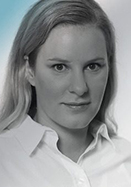 Susanne Effenberger
Head of Clinical Research & Professional Relations DMG, Hamburg
Susanne Effenberger
Head of Clinical Research & Professional Relations DMG, Hamburg
Germany
- Micro-Invasive Dentistry: From “Drill and Fill” to “Heal and Seal” More
- Restorative Dentistry is changing nowadays. Due to widespread fluoridation and other preventive measures caries is progressing slower and the disease burden shifts more and more from children and adolescents towards older people. A new caries paradigm describes caries as a lifestyle - disease rather than an infectious disease. Due to these changes, besides the classic approach of caries treatment by excavation of diseased tissue and restoration of the defect, new treatment options emerged. These new methods aim to “heal” caries lesions without excavation either by addressing etiological factors or by micro-invasive measures such as sealing and infiltration of caries lesions. The lecture will and present new non- and micro-invasive treatments as well as the evidence regarding their clinical efficacy.
Sponsored Speakers
-
 Satoshi Imazato
Professor
Satoshi Imazato
Professor
Biomaterials Science
Osaka University Graduate School of Dentistry
Japan
*Sponsored by SHOFU - S-PRG filler: Advanced “Bioactive” Material for Restorative and Preventive Dentistry More
- Surface Pre-reacted Glass-ionomer filler (S-PRG filler) developed by SHOFU INC and incorporated into various restorative/coating materials is the technology of great interest. S-PRG filler, prepared via an acid-base reaction between fluoroboroaluminosilicate glass and a polyacrylic acid, has the pre-reacted glass-ionomer phase on its surface which allows release of F-, Al3+, BO33−, Na+, SiO32−, and Sr2+. Due to release of such multiple ions, the functions exhibited by S-PRG filler are diverse. These include strengthening of tooth substrates, acid neutralization, promotion of calcification, antibacterial effects, and inhibition of bacterial biofilm formation. Restorative or coating/sealing materials containing S-PRG filler are thereby expected to provide clinical benefits for prevention and management of caries or periodontal disease. In this presentation, the advanced technology of S-PRG filler and its usefulness in the field of restorative and preventive dentistry will be summarized.
